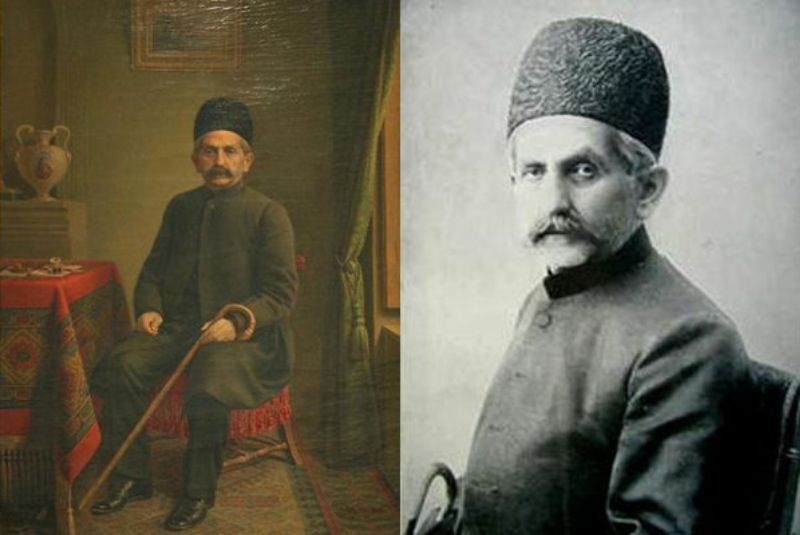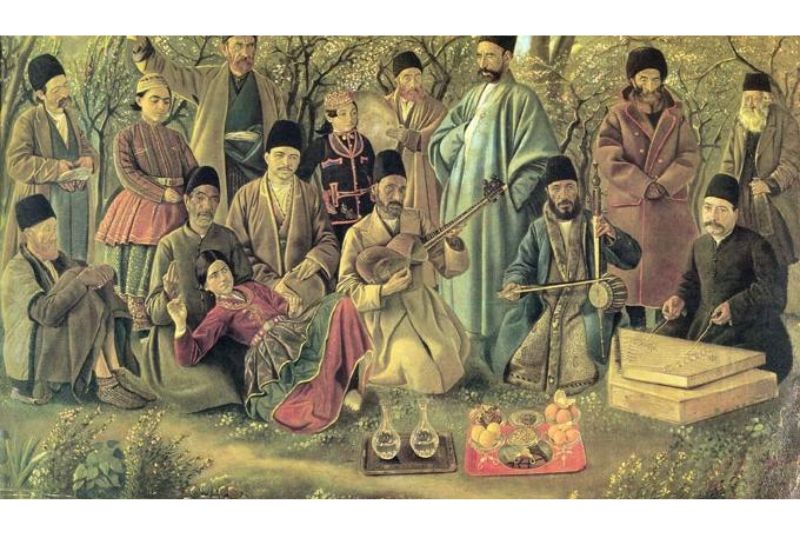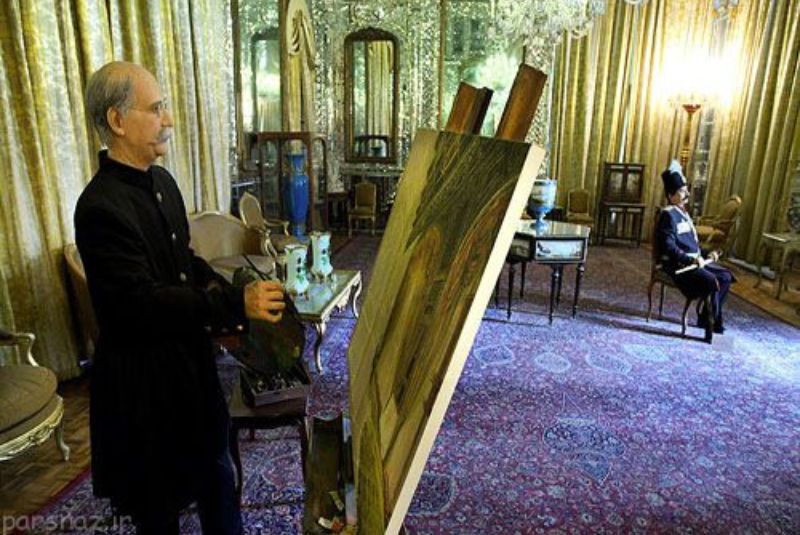Kamal-ol-Molk: The Iconic Persian Artist
The significance and popularity of Kamal-ol-Molk are woven into the fabric of Iran's cultural heritage.
Renowned for his exquisite paintings and lasting impact on Persian art, he is celebrated as a visionary artist who helped shape the artistic identity of his nation. His works resonate not only with Iranians but also with admirers from around the world.
This article explores the life, artistry, and lasting impact of Kamal-ol-Molk. We will uncover the artistic brilliance that elevated him to an iconic status, take a tour of the Kamal-ol-Molk Museum, and embark on a voyage to the locales that profoundly influenced his journey.
Early Life and Background of Kamal-ol-Molk
Kamal-ol-Molk, whose birth name was Mohammad Ghaffari, was born in the year 1847 in Kashan, Iran. His early life was marked by a rich cultural backdrop and a family deeply immersed in art and tradition. His father, Mirza Bozorg, was a well-known calligrapher and poet, which exposed Kamal-ol-Molk to the world of creativity from a young age.

Kamal-ol-Molk's received formal artistic training at the prestigious Dar al-Funun (House of Sciences) in Tehran, where he honed his skills in painting and embarked on a journey of artistic exploration. During his formative years, he also had the privilege of learning from some of the most eminent Persian artists of his time, including Mirza Ali Khan Ghaffari, his uncle and a renowned miniaturist.
His early exposure to the world of art through his family laid the foundation for his creative endeavors. Formal education at Dar al-Funun provided him with technical expertise and a platform to experiment with various artistic styles. His interactions with prominent artists of the era contributed to his artistic vision and growth. All these elements converged to cultivate an artistic genius who would later redefine Persian art, leaving an indelible mark on the canvas of history.
From 'Naghghash Bashi' to 'Kamal-ul-Molk'
Early in his career, Kamal-ol-Molk was known as "Naghghash Bashi," signifying his role as a painter. However, his journey in the Persian court led to significant changes:
- Kamal-ol-Molk first held the title of "Khan" and later became a "Special Servant" in the Persian court, reflecting his growing influence and recognition.
- Naser al-Din Shah, the reigning monarch, was captivated by Kamal-ol-Molk's artistic talents. In 1833, Kamal-ol-Molk was granted the prestigious title of Court Painter or ‘Naghghash Bashi' and became the Shah's tutor.
- Later, "Kamal-ul-Molk" was suggested by Naser al-Din Shah as his new title, and it was officially adopted. During his tenure at the court, Kamal-ul-Molk created around 170 paintings, showcasing his mastery. Notably, the "Hall of Mirrors" became one of his most famous works and marked the beginning of his association with the name "Kamal-ul-Molk."
Artistic Style and Techniques
Kamal-ol-Molk's artistic style is characterized by a harmonious fusion of traditional Persian artistry and innovative techniques. He was a pioneer in introducing realism into Persian painting, bringing a new level of depth and dimension to his portraits. His use of vibrant colors and intricate detailing, especially in the depiction of textiles and jewelry, reflects his commitment to capturing the essence of his subjects. His murals are a testament to his skill in storytelling through art, with each figure and detail conveying a historical narrative.
Impact on the Art World
Kamal-ol-Molk's art transcended geographical and cultural boundaries, earning him recognition and admiration far beyond Iran's borders. His innovative approach to Persian art influenced subsequent generations of artists, both in Iran and abroad. He played a pivotal role in the revitalization of Persian painting during the Qajar period, setting a standard of excellence that endures to this day. His impact on the art world is a testament to the enduring power of creativity and the profound resonance of his work.
Kamal-ol-Molk’s Famous Works

Kamal-ol-Molk created several famous works, including paintings and murals, which continue to be celebrated for their artistic brilliance and historical significance. Here are some of his notable pieces:
The Mirror Hall (1896)
After being bestowed with the title "Kamal-olMolk," his inaugural creation was the splendid masterpiece known as "The Mirror Hall." This marked the debut of the signature "Kamal-ol-Molk" on a canvas, and it wasn't just another painting; instead, it served as a transformative moment in the realm of Iranian art, functioning as a portal to a fresh world, transcending the confines of mere paint and canvas.
This remarkable artwork serves as a testament to Kamal-ol-Molk's innate talent and boundless creativity. Within this piece, the artist masterfully captures the intricacies and nuances of the expansive "Mirror Hall" at Golestan Palace.
Portrait of a Man and a Woman (1879)
This exquisite portrait depicts a Persian nobleman and a woman dressed in traditional attire. The intricate detailing of clothing, jewelry, and facial expressions showcases Kamal-ol-Molk's mastery of realism.
This painting is celebrated for its meticulous attention to detail and the lifelike portrayal of the subjects. It captures the essence of Persian aristocracy during the Qajar era.
Portrait of Mozaffar al-Din Shah (1889)
Kamal-ol-Molk's portrait of Mozaffar al-Din Shah, the Qajar king, is a stunning portrayal of the monarch in his regal attire. The attention to the Shah's facial features and the opulence of his clothing is striking.
This portrait is famous for its historical significance, as Mozaffar al-Din Shah was a pivotal figure in Iran during his reign. It exemplifies Kamal-ol-Molk's ability to capture the grandeur of the royal court.
Mural in the Golestan Palace (1891)
Kamal-ol-Molk's monumental mural in the Golestan Palace in Tehran depicts a lavish court scene during the Qajar era. It showcases courtiers, nobility, and the Shah himself in a grand setting.
This mural is renowned for its historical significance and the grandeur it imparts. It provides a vivid glimpse into the court life of the Qajar dynasty and is considered a masterpiece of Persian mural art.
Portrait of Ezzat al-Saltaneh (1897)
This portrait features Ezzat al-Saltaneh, a prominent Persian princess known for her beauty. The painting captures her in a regal pose, adorned with sumptuous clothing and jewelry.
Ezzat al-Saltaneh was celebrated for her beauty, and this portrait became an iconic representation of her. It reflects Kamal-ol-Molk's ability to elevate the beauty of his subjects to an artistic pinnacle.
Kamal-ol-Molk's Museum

Established to honor his contributions to Persian art and culture, the Kamal-ol-Molk museum provides a captivating journey through his life and works.
The Kamal al-Mulk Museum can be found in the southern area of Bagh Nagaristan in Tehran, situated near Baharestan Square on Danesh Sera Street.
To access the museum, simply disembark at Baharestan Metro Station on line 2, and after a brief 10-minute stroll uphill from the metro station, you'll arrive at Bagh Nagaristan.
You can explore Nagaristan Garden and its museums every day between 9 am and 7 pm, with the exception of Mondays and holidays.
Inside the museum, you'll encounter a comprehensive collection of Kamal-ol-Molk's masterpieces, including portraits, landscapes, and historical murals. Each exhibit is carefully curated to showcase the evolution of his artistic style and the depth of his contributions to Persian art.
Kamal-ol-Molk's Influence on Modern Iran

Kamal-ol-Molk's work has not only stood the test of time but has also inspired subsequent generations of Iranian artists. Many contemporary painters and creators draw inspiration from his meticulous attention to detail, use of color, and ability to capture the essence of his subjects.
His dedication to portraying Persian culture, history, and landscapes serves as a touchstone for artists seeking to bridge the gap between tradition and modernity. His mastery of both realism and traditional Persian artistry continues to influence a diverse range of artistic expressions, from painting to digital art.
Bottom line
Kamal-ol-Molk, the Persian art luminary, leaves an indelible mark on the canvas of history. His mastery of artistry has reshaped Persian culture and art.
As you explore the captivating world of Kamal-ol-Molk, remember that his art is more than just strokes of paint on canvas; it's a reflection of the beauty, culture, and history of Iran. In the words of the great Persian artist himself, "Art is a mirror to the soul," and Kamal-ol-Molk's legacy continues to shine brightly, inviting all to gaze upon the soul of Iran through his timeless creations.


Comment
Leave a Comment